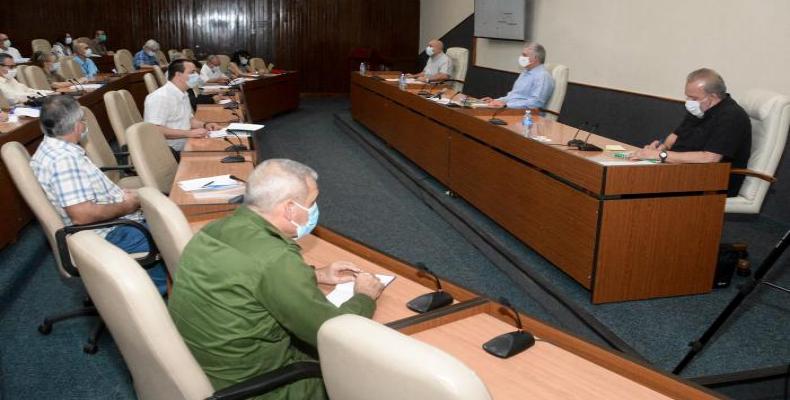Havana, June 26 (RHC)-- Cuban President Miguel Díaz-Canel highlighted the achievements of Cuban science during these complex months of confrontation with the COVID-19 in the country. He said that from uncertainty, "we have moved on to consolidate results that show progress and that we have travelled a scientific path that is becoming stronger."
These reflections were motivated by a new exchange between the head of state and Prime Minister Manuel Marrero Cruz, meeting with experts and scientists who have not lost a minute in seeking ways to counteract the effects of the epidemic.
"Here everyone is cooperating, one with the other, without vanity; they are complementing and supporting each other, and in the end, what we obtain is a unique result for the common good," said Diaz-Canel.
A wide variety of topics are included every week in these types of meeting, in which the essential role played by our men and women of science is ratified. On Thursday, there was a presentation of the preliminary results of a study of the genetic risk factors associated to the clinical severity with which the disease has or has not manifested itself in Cuba.
In this regard, Dr. Beatriz Marcheco Teruel, Director of the Center for Medical Genetics, explained that the research stems from the evidence that has been published during this period, related to possible immunogenetic factors that may be linked to the clinical severity of the disease in certain people.
The project aims to address clinical-epidemiological factors that include social variables such as occupation, race, age groups, toxic habits, disease history, stress levels, and other clinical variables of an immunological and genetic nature, both of the individual and of those who live with him or her and are related.
The research, in which various Cuban institutions are participating, and which is currently in the initial phase of development, will also evaluate elements such as the socio-demographic characteristics of the recovered patients; the chronic non-communicable diseases they suffer from; the distribution according to their blood group; the presence or not of antibodies against vaccine antigens and others.
Preliminary results show, for example, that from March 11 to June 11, the period in which the selection of patients contained in the sample is framed, the number of white-skinned people who fell ill is generally higher, as well as the predominance of patients with blood group a.
This study, considered the specialist, has the community as a starting point and demonstrates the value of identifying our population immuno-epidemiologically. The procedure we have followed allows us, she said, to develop personalized treatments that give answers to individual genetic characteristics and thus have elements to design and implement population prevention strategies.
The anatomo-pathological analysis of patients who have died from the new coronavirus also contributes to the rehabilitation of those who recover from the disease. The main results of this analysis were presented during the conference by Dr. Teresita Montero González, from the Medical Services of the Central Military Hospital Dr. Luis Díaz Soto.
The study takes into account, among other elements, the distribution by age group and sex, as well as the behavior of chronic diseases and their incidence in the deaths of patients.


